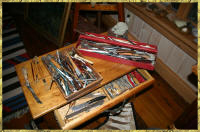Obara discovers suitable subjects for bronzes based on his field studies. On location or back in his studio, he may do a maquette (small model) to see how the idea will play out once it is enlarged. These quick studies are like thinking in clay. He also makes maquettes when executing commissions from landscape designers, architects and interior designers where the work must be designed to fit into an overall plan.
Once Obara has decided on a general design, the closed cell foam is cut, glued, worked with rasps and knives into a general shape. Next he uses soft wire to get a visual feel for how the work is going to flow. This process is another form of drawing, but here he uses the closed cell foam and wire instead of his favorite number 2 lead pencil.
After the sculpture has been roughed out, steel rod is used for internal support, as needed, then covered with foam.
At this point the basic structure is finalized. Obara covers the entire model with clay, ranging in depth from a half inch to several inches at those points where deep relief or carving will be needed. This whole piece is thought through before the next step is taken. In the days before foam, steel rod was welded together to support the solid clay model. With closed cell foam, very little clay is necessary, thus reducing the weight and support requirements.
If something is off an inch or two, a sharp knife is used to cut through the clay to remove excess foam, and more clay is added as necessary. In the old-style steel support process, the sculptor would have had to cut and re-weld the framework, destroying all his previous work. At this point, the plaque is just a piece of foam . Adding the plaque now allows it to be moved so it does not interfere with the visual sight line of something else. Changes can be made easily using the foam.
Obara works with a wide variety of tools to achieve desired detailing effects. Detailing is the artist’s method of leading the viewer’s eye to see the suggestion the sculptor is trying to produce.
For Obara, any tool is fair game. His studio junk drawer overflows with tools he has made or collected and used over the years during his career.
Once the model is covered in clay, Obara finesses all the parts and pieces, square inch by square inch. Going back to the sculpture time and time again, he makes subtle changes to the fine details that capture the expression and life of his subject.
With the clay model completed,, Obara employs the lost wax process to create the bronze casting.
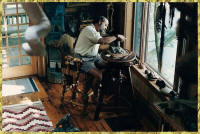
Working on mountain lion bust maquette
Foam core for running wolf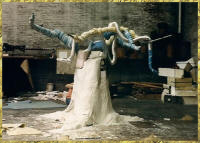
Adding the limbs to baobab tree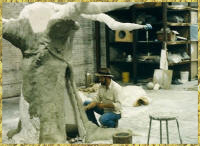
Adding the clay over the foam
Ready for plaque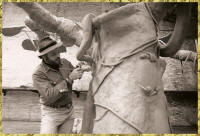
Adding detail to the python
Tools
Working on the leaves
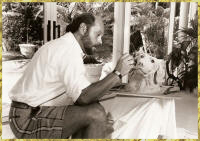
Sculpting the labrador bust

